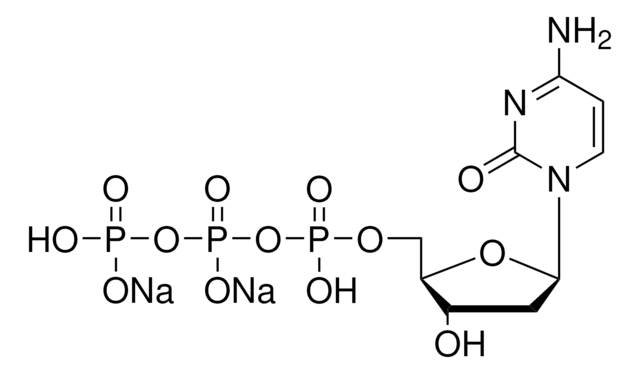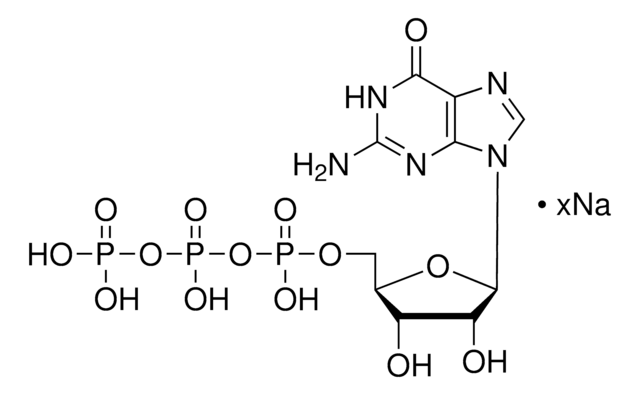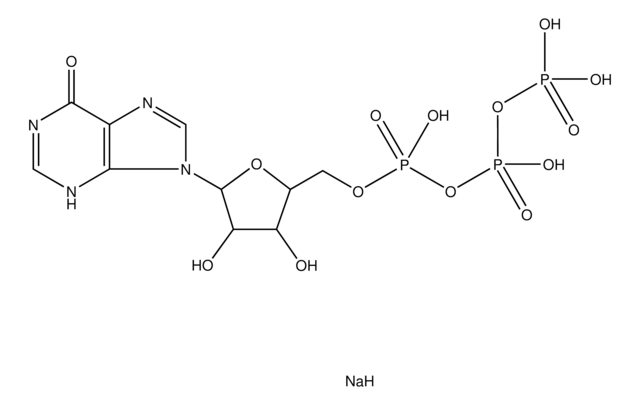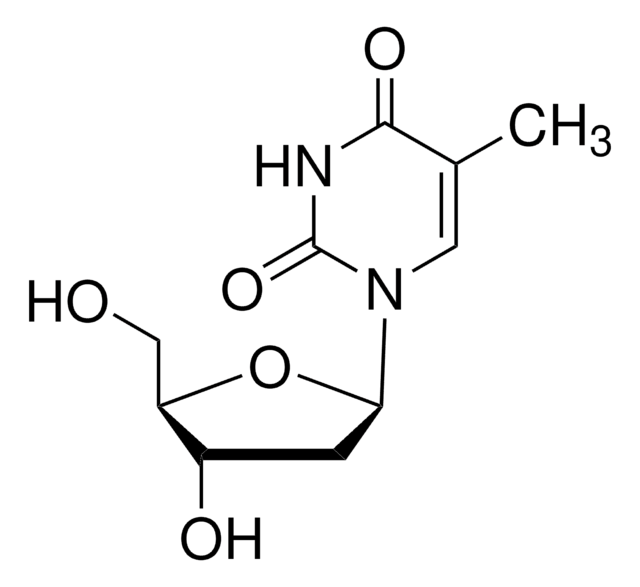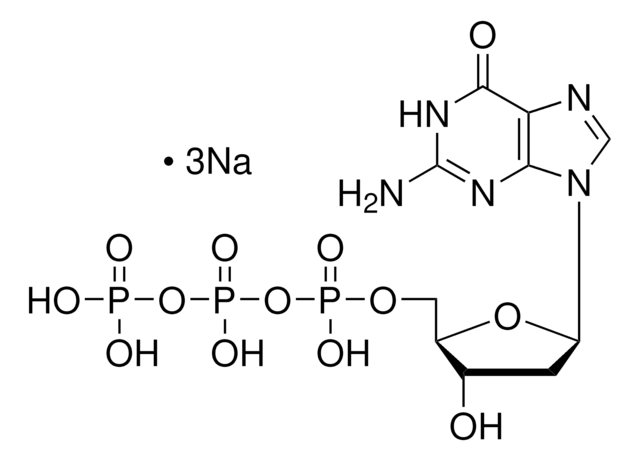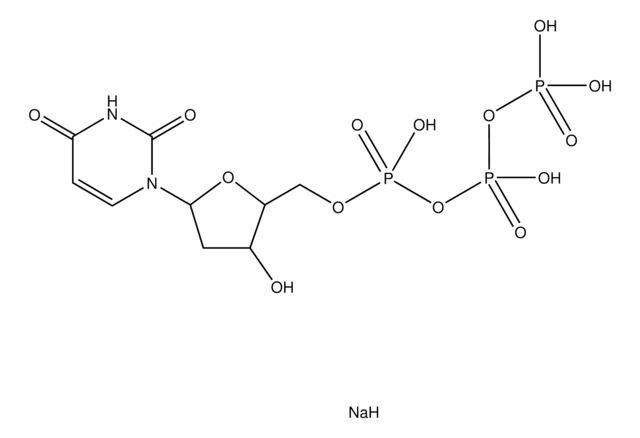T0251
Thymidine 5′-triphosphate sodium salt
≥96%
Sinónimos:
TTP, dTTP
About This Item
Productos recomendados
assay
≥96%
shipped in
dry ice
storage temp.
−20°C
InChI
1S/C10H17N2O14P3.Na.H/c1-5-3-12(10(15)11-9(5)14)8-2-6(13)7(24-8)4-23-28(19,20)26-29(21,22)25-27(16,17)18;;/h3,6-8,13H,2,4H2,1H3,(H,19,20)(H,21,22)(H,11,14,15)(H2,16,17,18);;
InChI key
KAELIXTVSANDSE-UHFFFAOYSA-N
¿Está buscando productos similares? Visita Guía de comparación de productos
Application
- in the quenching ability test for dual-aptamer and multiple-nucleotide detection based on a multiple-aptamer/GO-nS complex
- to study protein-metabolite interactions in the central metabolism of Escherichia coli
- in a polymerase chain reaction (PCR) product formation using AM-toxin primers
Biochem/physiol Actions
Storage Class
11 - Combustible Solids
wgk_germany
WGK 3
flash_point_f
Not applicable
flash_point_c
Not applicable
Certificados de análisis (COA)
Busque Certificados de análisis (COA) introduciendo el número de lote del producto. Los números de lote se encuentran en la etiqueta del producto después de las palabras «Lot» o «Batch»
¿Ya tiene este producto?
Encuentre la documentación para los productos que ha comprado recientemente en la Biblioteca de documentos.
Los clientes también vieron
Nuestro equipo de científicos tiene experiencia en todas las áreas de investigación: Ciencias de la vida, Ciencia de los materiales, Síntesis química, Cromatografía, Analítica y muchas otras.
Póngase en contacto con el Servicio técnico

